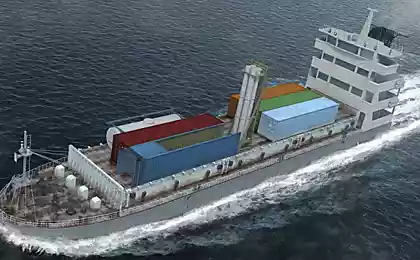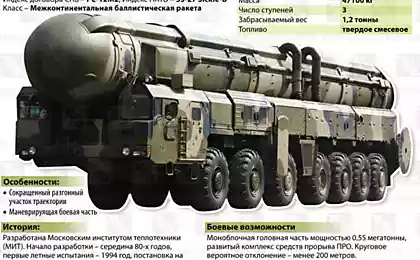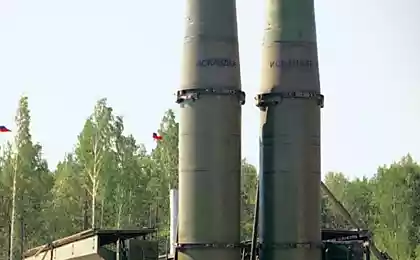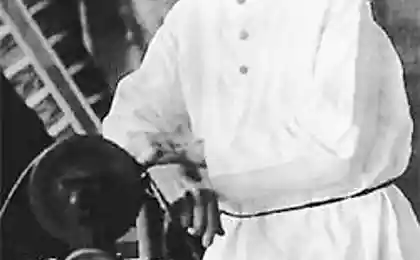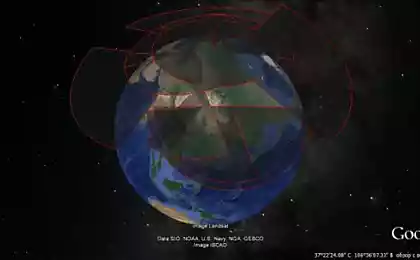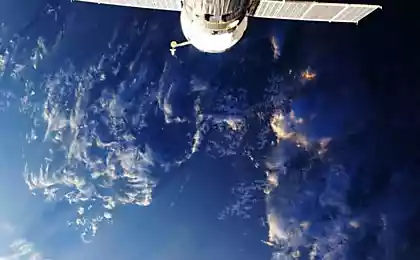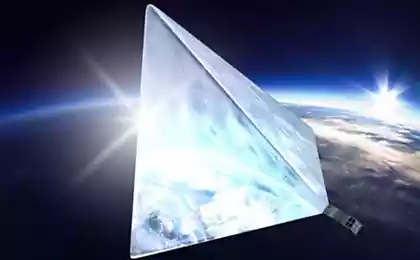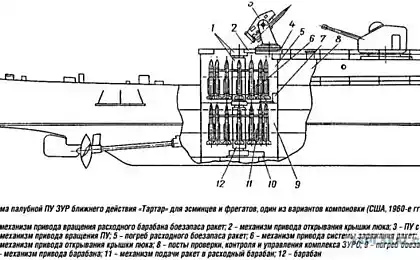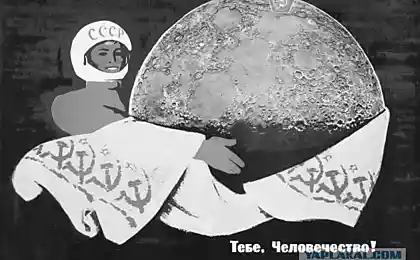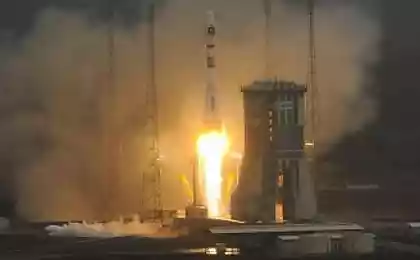1001
Rockets, who lost

Sometimes it turns out that a logical and correct decision to stop the development of technologies that have proved to be very out of place thirty years. Intercontinental ballistic missiles flying at a speed of Mach 22, turned out to be easier than the intercontinental cruise missile, which flew to the target at a speed of Mach 3. Soviet "Storm" and "Buran" Snark American Navaho and lost P-7 and "Atlas". But who knows, maybe now the space would be closer if they were developed further?
Historically, the first intercontinental cruise missiles began to develop the Americans, so let's start with them.
SM-62 SnarkAmerikantsev impressed with the success of the German cruise missile "V-1" and, after the war, they wanted to imagine the same, only better. In 1946, the US Air Force have concluded a contract with Northrop to develop two cruise missiles, long-range - subsonic MX-775A «Snark" and supersonic MX-775B «boojums". Snark and boojums - fictional creatures from the poem by Lewis Carroll, and if the text of the Snark was a dangerous meeting with the boojums for man was deadly. Obviously, while the military and engineers had a great sense of humor ...
The program has never enjoyed great support of the Congress in the form of generous funding, so the first test only began in 1951. But this time, instead of the US Air Force in the range of 2500 km wanted to intercontinental range of 10 000 km. The design "Snark" was necessary to alter and "boojums" was considered too ambitious and closed.

Sketch "boojums". Financial constraints and the policy proved fatal even for terrible fictional creatures
"Snark" as a result got a beautiful view of the rapid beveled wings and unorthodox brand Northrop:
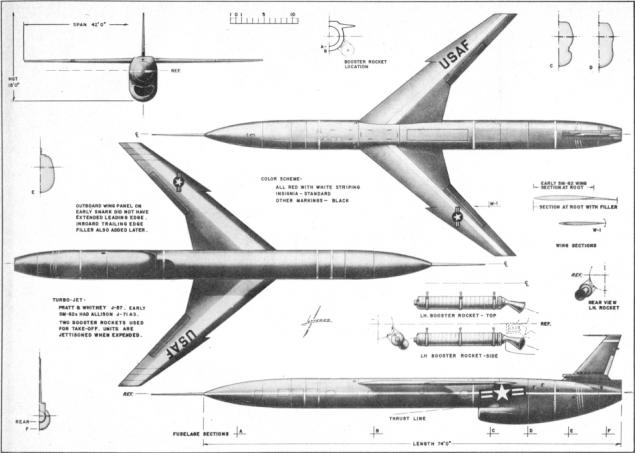
The rocket had no horizontal tail, and it was controlled in flight pitch elevons, flying with a noticeable positive pitch (nose up).
The project was difficult. Numerous accidents during test launch from Cape Canaveral led to the fact that around the seabed strewn lot of fallen and drowned rockets, and dedicated to the mysteries of the project wits joked about the Snark - a new predator in Florida waters. A little help replacing J71 to J57 engine. But when in 1955 began testing the navigation system, the problems started on the new, already with her. Inertial system with a duration of ten hours of flight gave an error in the 30 km that nowhere would not do even for atomic weapons. It was necessary to complement its navigation by the stars. Combined astroinertial system has improved the accuracy of up to 2, 4 km. In one test, the missile flew to Ascension Islands error 7, 4 km, but the investigation revealed that the islands themselves were located on the map accurately enough, and the error was actually less. At the same time, the reliability is poor - the other rocket flew to Brazil, where she was found in the jungle 30 years after
. An interesting feature of the missile was test flights that she could return to base after a ten-hour flight, and re-used. In such flights on a rocket set ski gear and a brake parachute. A airfield Cape Canaveral was preserved until now unofficial name Skid Strip ( «trails" in a free translation).
In the case of the combat use of the march to the engine and wings had effectively discharged:

A warhead - to fall into the goal. He served as a thermonuclear charge warhead W39 TNT equivalent of 3, 8 megatons.
"Snark" was the only rocket out of this publication, which has been deployed for combat use. In 1959, on the base of Presque Isle in Maine entered first rocket, and March 18, 1960 stood missiles on combat duty. Total based on 30 was combat-ready missiles. But by 1960, the "Snark" is already hopelessly behind against ballistic missiles. IDB reaches the USSR for twenty minutes and was invulnerable to air defense, and subsonic "Snark" is easily detected, intercepted and destroyed. In the spring of 1961, President Kennedy announced the rocket "outdated and has no military value" and the "Snark" was removed from service. Now it can be seen in several American museums.
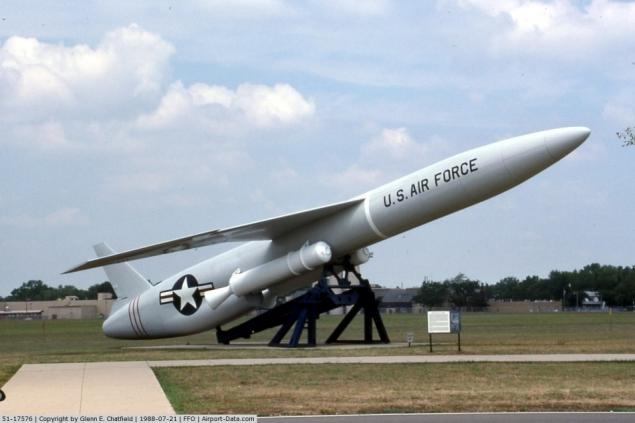
SM-64 Navaho NavahoRazrabotka project was launched in 1946, too. As is the case with the "Snark", the original design was simpler and less - under the code Nativ was supposed to create a system with a rocket launch and flight planning based on the V-2 technology and a range of 1,600 km:

Image Nativ tests. The proportions of the V-2 it is recognizable
But over time, requirements have changed. The US military received a sufficient number of short-range missiles, and they wanted more and more long-range missile. By the early 1950s were in the range of demands of 10 000 km and a speed of Mach 3. The design had to be changed:
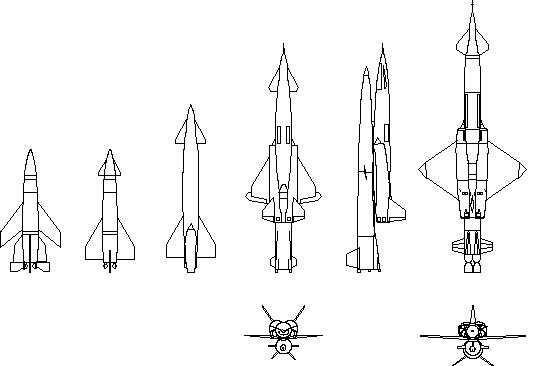
As a result, instead of the concept of "missile acceleration and planning" had to put marching ramjet engine, but in order for him to start, to disperse it as a separate rocket stages. For the tests done reduced by a third version of the index Navaho G-26.
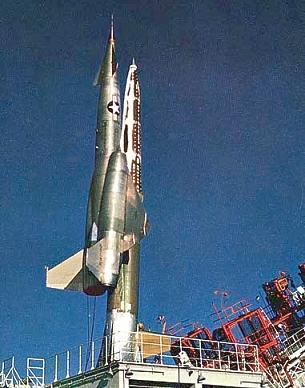
In November 1956, the first test. The missile exploded after 26 seconds. The following ten tests also failed. Only in the twelfth time, March 22, 1957, the rocket could fly for almost five minutes.

The next launch - again at the start of the explosion. 26 June - a comparative success, another 4, 5 minutes of flight. A July 13, 1957 the project was closed suddenly. Testing a full-sized version did not even start. The reason for the closure was obvious - Jupiter, Thor and Atlas ballistic missiles began testing the spring of 1957. They also exploded at the start, but Thor IRBM could fly 2,100 kilometers in May, and the benefits of ballistic missiles were evident. North American Company, as compensation for the canceled contract, has received an order to develop a cruise Hound Dog air-launched missiles. And there is some irony in the fact that the engineers that made Navaho, then participated in the development of Apollo ships and, later, Space Shuttle.
However, despite the closure of the project, has already made test flights of missiles continued until the spring of 1958. The guidance system is considered promising for the possible use of other missiles. In February 1958 one rocket was able to fly more than 2000 kilometers. Alas, for the resumption of the program that did not lead. Navaho waiting for the same end - Museum
.
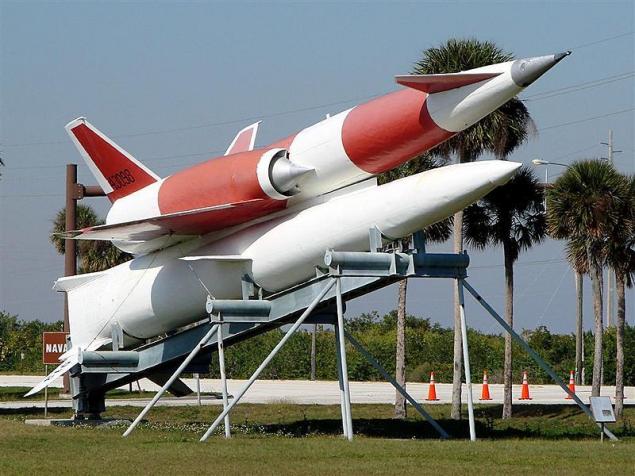
Still remarkably ugly design turned out ...
USSR
In the USSR, work on intercontinental missiles began later, but were intensified. The decision on creation of unmanned delivery vehicles of nuclear charge at intercontinental range of at least 8,000 km of the USSR Council of Ministers was adopted in 1954. At the same time we started two areas - ballistic and cruise missiles. And if of ballistic missiles has grown famous "Seven", the cruise missiles had two - La-350 "Storm" Lavochkin Design Bureau, and the M-40 "Buran" KB Myasishcheva
La-350 "Storm" Preliminary design ". Storm "was completed in August 1954. The rocket was supposed to start upright on two accelerators of the first stage, rising to a height of 17 km, and accelerate to speeds of 3M. There were dumped accelerators and include marching ramjet engine (ramjet). At the second stage it was supposed to fly at an altitude of 17-18 km, approaching the goal to gain 25 km of flak evasive maneuver and dive on the target. rocket weight was 95 tons, and the guidance system to navigate by the stars was to ensure the accuracy of up to 10 km.
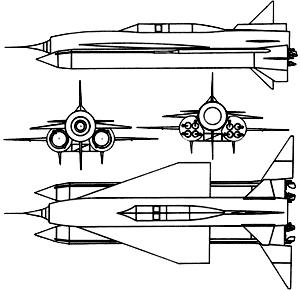
Three projection

rocket in assembly and test complex
The tests began in July 1957. In the first flight due to abnormal operation of the relay were immediately dumped gas rudders at the first stage, the rocket lost control, tumbled and fell near the start. Only the fifth time in the spring of 1958 turned out to have a successful launch. The tests went well, the missile flew farther, but the trouble came from not waiting. Marching ramjet, which can be verified only during the flight, it was less effective than it was estimated. The engine consumes more fuel, gave a lower specific impulse, and instead of the estimated range of 8,500 km could receive a maximum of 6500. In addition, the yard was already in 1960, a ballistic missile R-7, which began testing in the spring of 1957, have already been adopted into service, we were working on the creation of an ICBM R-16. "The Tempest" was closed, proposals for the creation on its base or fotorazvedchika target missiles have been rejected, it is now on the reminiscent preserved only in a surprisingly large number of test frames:
And renders the site "Buran.ru»

Such was the second stage in flight
M-40 "Buran" Pro "Buran" know the least. It had to be almost twice as heavy because of the use of heavier warheads constructively looked like a "storm", used the same bunch of "ramjet + accelerators LRE", only had four accelerators. Range "Buran" was estimated to exceed 9000 km.
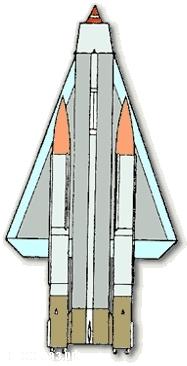
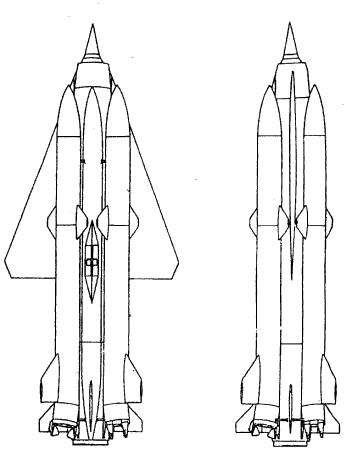
It is known that one rocket, which reached the stage of test bench was built in 1957. "Buran" The project was canceled in 1958.

zabytogoPo The benefits of both sides of the ocean the decision to close projects mezhkontitentalnyh cruise missiles was logical, justified and correct. However, along with cruise missiles were lost technology of supersonic ramjet thrust high. If "The Tempest" is preserved, such as fotorazvedchik, then its engine operating time could be used in "Spiral" project. Yes, according to the plan "Spiral" needed a hypersonic aircraft razgonnik, at a rate of up to 6 meters, but because of the apparent technical complexity of its creation project could try to use the studies for "The Tempest" / "Buran" to create a simplified media first. Besides, let us not forget that, if the project is preserved, and it will be financed by further research would be the chances to raise capacity, specific impulse and maximum operating speed of the engine. A bunch of "mini-shuttle rocket engine + + + razgonnik ramjet" in the presence of a large cultivated ramjet thrust could easily check the scalability of multiple systems and, who knows, maybe we facilitate access to space?
Publications on military space the tag «military space." All those concerned - the Day of Defender of the Fatherland
! . Publications about the options and ideas to facilitate access to space by the same name tag
small ads for residents of Ufa
Source: geektimes.ru/post/271528/
What kind of movies we remember his music
Five-dimensional black holes can destroy the general theory of relativity
